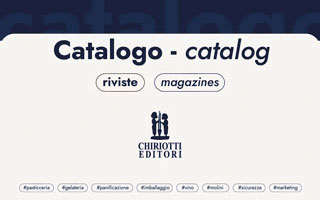
Research Research conducted by scientists from the US and South Korea and published in the Journal of Food Composition and Analysis challenges consumer perceptions that fresh fruit and vegetables have greater levels of nutrients than their frozen counterparts.
There is much evidence that increased consumption of fruits and vegetables can improve public health and they are known to be important sources of nutrients. A recent meta-analysis into fruit and vegetable intake and the risk of cardiovascular disease, cancer and total mortality, by scientists from institutions including Imperial College London, and published in the International Journal of Epidemiology has been cited widely in the popular press. This study suggests that while disease risk can be reduced by consuming 5 portions of fruit and vegetables a day – the ‘5-a-day’ campaign – the largest benefit can be gained by eating around 800g, approx. 10 portions, per day.
The current study, by Li et al, funded by a grant from the Frozen Food Foundation, a not-for-profit organisation, sought to analyse nutrients in fresh and frozen fruit and vegetables as well as in ‘fresh-stored’ produce. In this latter category, fresh items were stored for 5 days in a refrigerator at 4°C. This was introduced by Li et al. to approximate “typical consumer storage pattern”.
The researchers analysed fresh, frozen and fresh-stored samples of 6 vegetables (broccoli, cauliflower, corn, green beans, peas and spinach) and 2 fruits (blueberries and strawberries) for vitamin C, vitamin A and folate. The study was conducted over a period of two years in six distinct time frames across seasons from Summer year 1 to Spring year 2.
For vitamin C, Li et al. report that broccoli, cauliflower, corn, blueberries and strawberries showed no statistically significant differences between all three sample types. Frozen green beans showed higher levels of vitamin C than for fresh or fresh-stored beans. Although the same was found for peas the authors report that this was not statistically significant. Fresh spinach showed higher levels of vitamin C than fresh-stored which in turn was higher than frozen.
For vitamin A, while cauliflower had no significant differences across all three sample types, broccoli showed no significant differences between fresh and fresh-stored samples but both had higher levels than frozen. Fresh and frozen corn, peas and strawberries showed no significant differences in vitamin A but fresh-stored samples for all three had lower levels, significantly so for corn. Fresh green beans and spinach showed significantly higher levels than their fresh-stored and frozen types. Blueberries showed significantly different levels in the order fresh>fresh-stored>frozen.
Following folate analysis, Li et al found that cauliflower, spinach and strawberries showed no significant differences between types and that folate in frozen and fresh corn and peas did not differ significantly. Fresh-stored corn and peas had significantly lower folate levels than their fresh and frozen counterparts. Fresh green beans had significantly higher folates levels than fresh-stored and frozen, while frozen blueberries showed a significantly higher folate level than fresh-stored. Fresh blueberries had a folate level between frozen and fresh-stored but the differences were not significant.
In discussion, Li et al. note that they “determined that the majority of comparisons yielded no significant difference” and additionally state that five days of refrigerated storage generally has a “negative association” with nutrient concentration. They note that the study found “frozen produce samples to have a significantly higher nutrient contents than fresh-stored” more often than not. Li et al. conclude by saying that their findings suggest the time that fresh produce is stored before consumption is an important factor when comparing nutritional value and that they “do not support the common perception that fresh produce is nutritionally superior to frozen produce”.
Rssl.com








